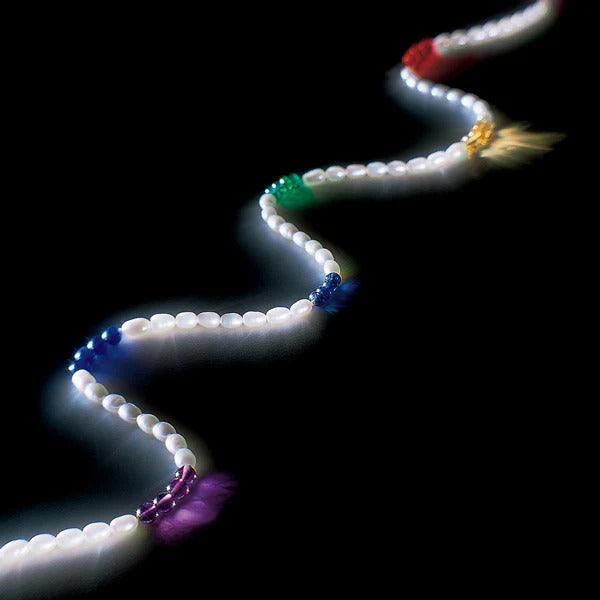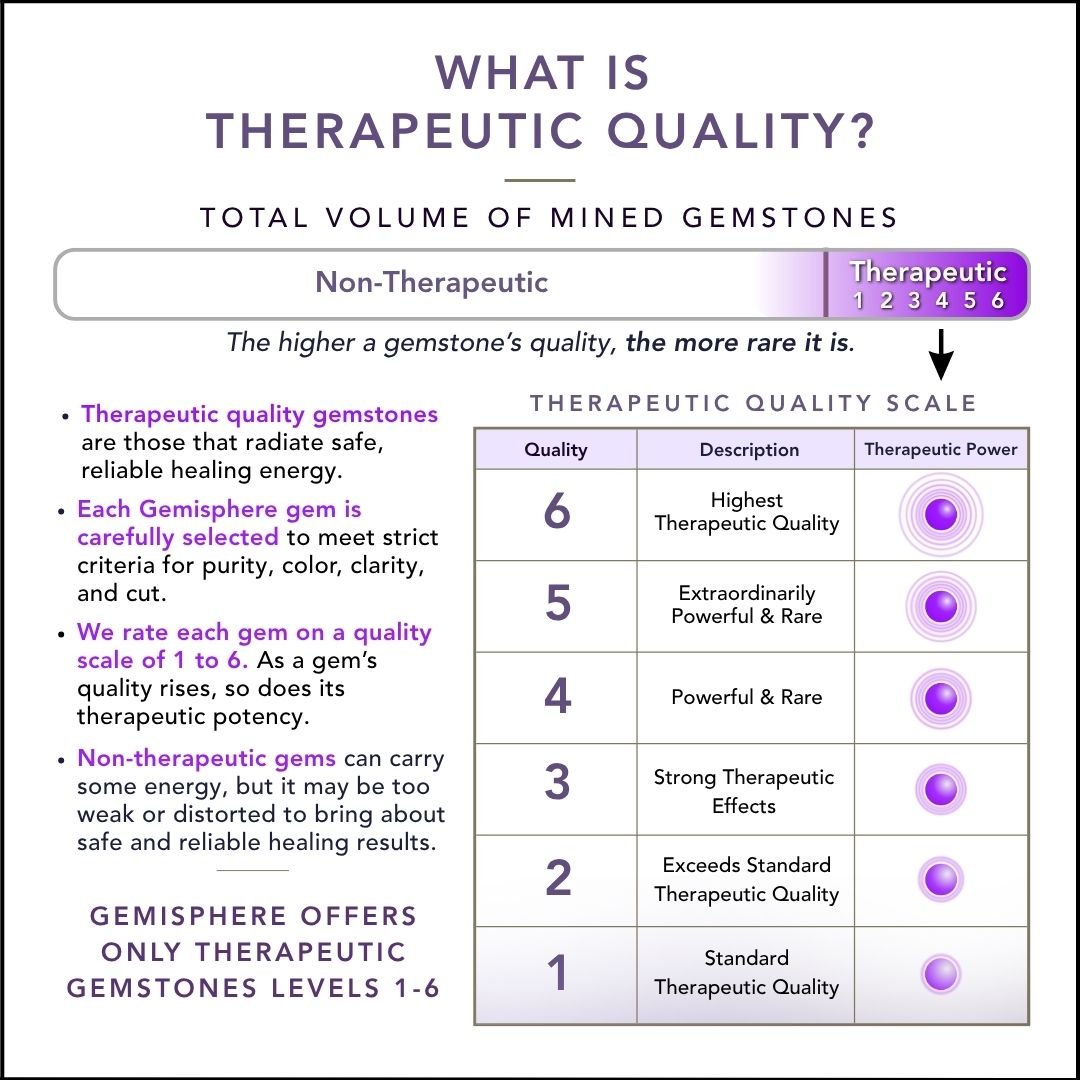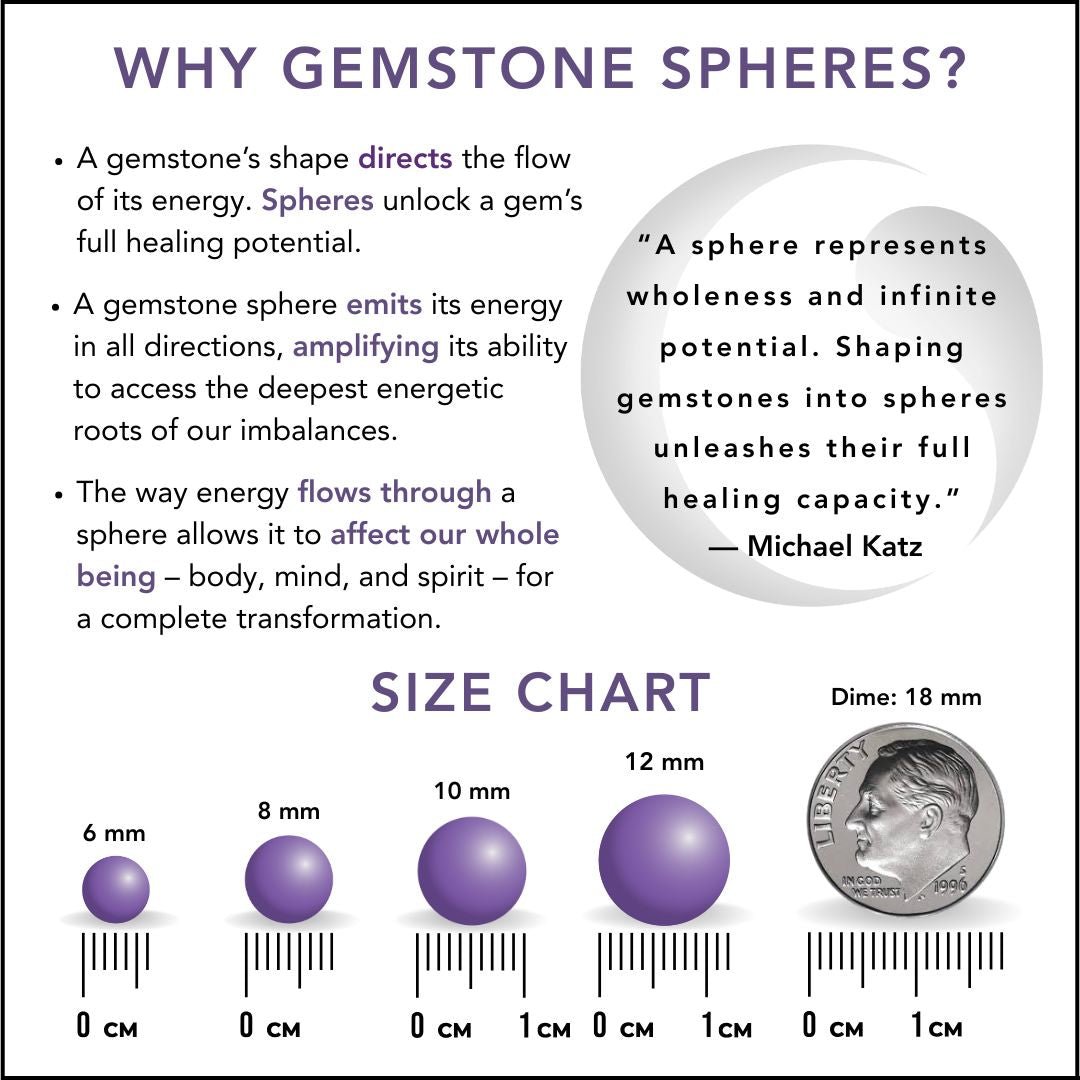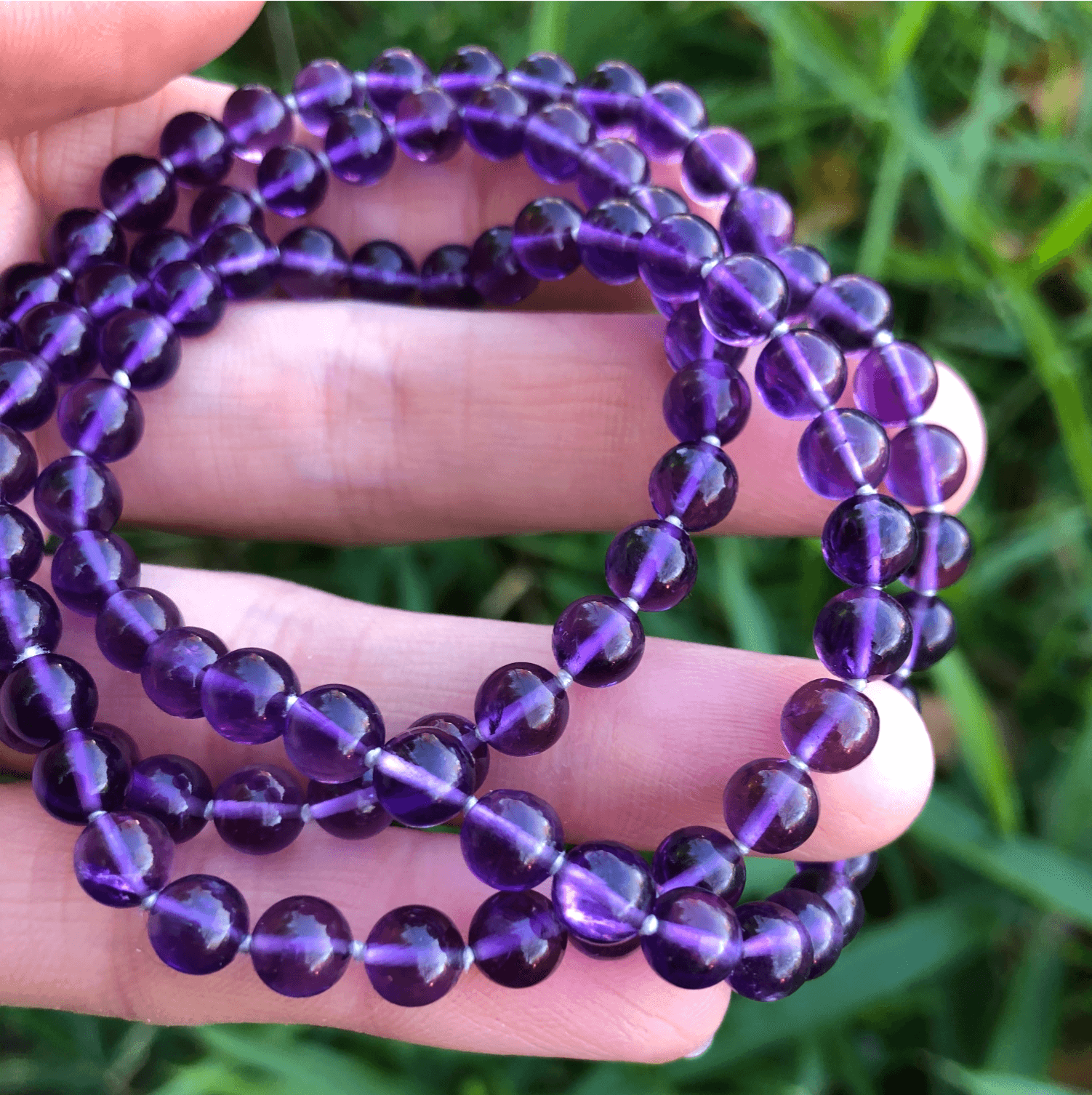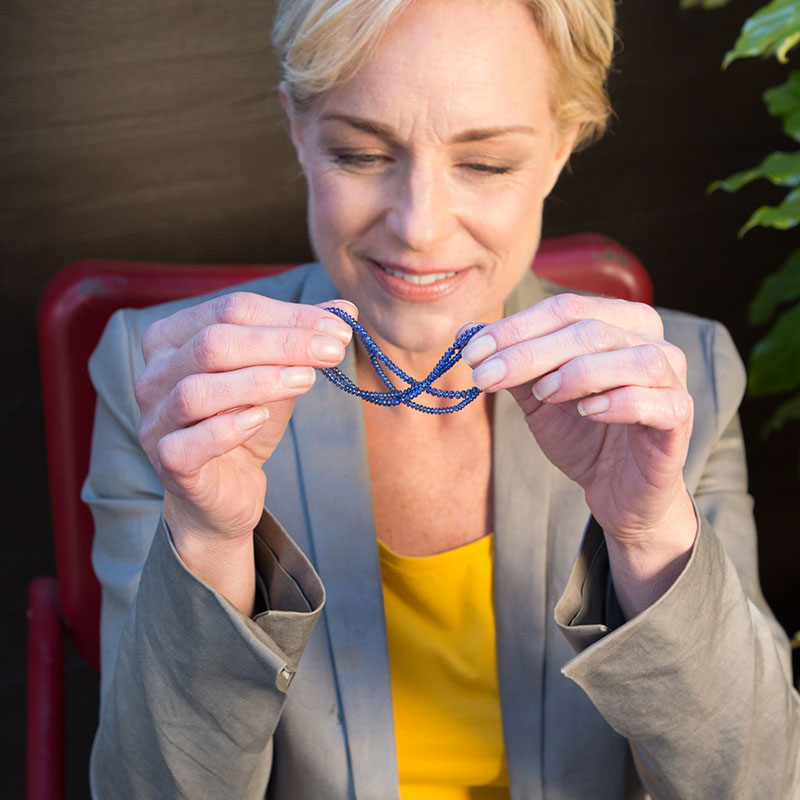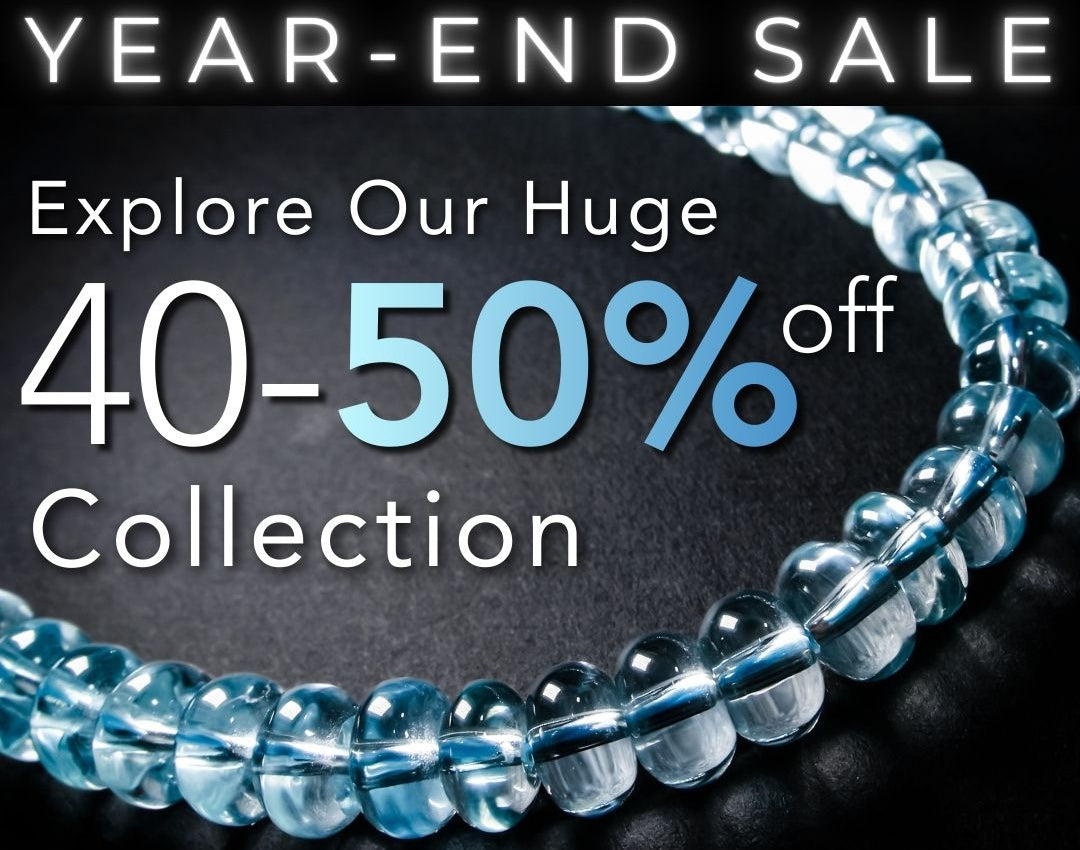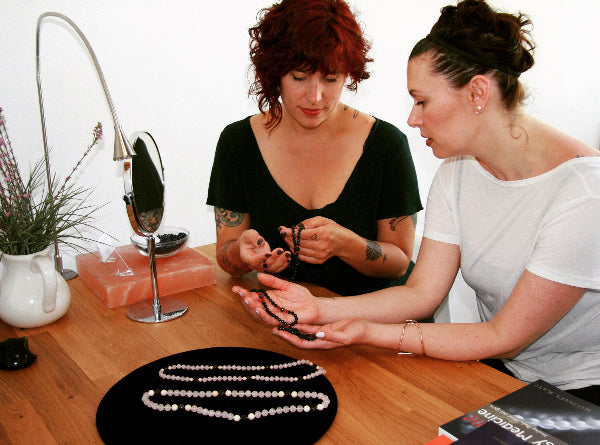When color rays flow freely throughout your being, you experience joy, vitality, and vibrant health. Ocean Rainbow’s color ray gemstones provide you with a continuous supply of vitalizing color rays, while its Pearl components reflect the beauty of your highest self.
Therapeutic Quality Ocean Rainbow
Ocean Rainbow necklaces contain Ruby, Precious Carnelian, Yellow Sapphire, Emerald, Blue Sapphire, Indigo, Precious Amethyst, and Chinese Pearl.
Ruby
Ruby crystals occur naturally in different qualities of color and clarity. The purer these qualities are, the more powerful are Ruby’s effects. Judging therapeutic quality in Ruby requires exceptional care and the consideration of many factors.
Therapeutic quality Ruby is at least somewhat translucent, true red, and free of black inclusions to the naked eye. Non-Ruby inclusions can be identified under a microscope and should be avoided as much as possible, since they restrict Ruby’s effects. Their area of influence is greater than the physical space they occupy; an inclusion affects the Ruby surrounding it in a radius equal to the inclusion’s diameter.
In order for Ruby’s energy to touch and stimulate the heart, it must carry the brightness of true red. Dark, burgundy-colored Ruby has a heavy energy that cannot reach above the lower chakras; the darker the color, the heavier the energy. On the other hand, Ruby that is too light or pinkish in color is immature and lacks the strength required to be therapeutically effective.
The precision of Ruby’s shape is crucial. Because Ruby energy radiates from the bead’s outer surface, poorly shaped rondels or spheres will make Ruby’s energy flow into the aura in an inconsistent manner.
When Ruby is cut into spheres or rondels, they are covered in a red oily polish. This polish should not be rubbed off, because the oil actually helps preserve the integrity of the physical crystal, which is very brittle. Fortunately, Ruby's energetic function is unaffected by this polish.
Precious Carnelian
Carnelian's quality is easy to judge with the naked eye. A microscope is not necessary and a light table may even be deceiving. With Carnelian, color is more important than clarity. Nonetheless, to be therapeutic, Carnelian must be free of any rock matrix or non-Carnelian inclusions. The Carnelian should not appear muddy or dull. Cracks, even small ones, should be avoided, because they disrupt the emission of the Carnelian’s frequency.
The color of a Carnelian gem as it is visible to the naked eye in sunlight is a true representation of the energy it will give to its wearer. To judge Carnelian’s true color, it must be held up in ambient sunshine outdoors and not directly in front of the sun. In this respect, Carnelian is different from some other gemstones: any light source placed directly behind Carnelian makes it appear lighter than it really is. Carnelian color should be as consistent as possible throughout the sphere and, ideally, true to the pure orange seen in a rainbow.
Yellow Sapphire
The most potent therapeutic Yellow Sapphire is a true canary yellow. Although therapeutic Yellow Sapphire can occur in a range of yellow tints, the color of the gems that comprise a particular necklace should be consistent and perceived as harmonious. Therapeutic Yellow Sapphire looks bright; the brighter it is, the more potent its therapeutic effects will be.
Gemstones can contain a variety of minerals not native to the gemstone that can contaminate the gemstone’s therapeutic effects. In Yellow Sapphire, a muddy color, hints of other colors, white clouds, and black spots are signs of contamination. Avoid Yellow Sapphire that tends toward orange, and absolutely avoid black or brown inclusions.
The common practice of treating the gemstones with beryllium renders them not only non-therapeutic, but potentially harmful to the aura. Therefore, Yellow Sapphire that has been chemically treated or irradiated with beryllium is to be avoided.
Our therapeutic Yellow Sapphire rondels are cut from high quality crystals usually reserved for making faceted gems. To ensure our Yellow Sapphire’s superior therapeutic value, we obtain the gemstones in rough form and then have the rondels cut to our unique specifications. Consequently, we offer the highest quality therapeutic Yellow Sapphire rondels available anywhere.
Emerald
Color, brightness, and clarity are of equal importance in therapeutic quality Emerald. The color green that most closely matches the green of the rainbow is most powerful in Emerald. Therapeutic Emerald is a rich, radiant, pure bright green with good clarity. When the necklace is examined as a whole, it should be free of black flecks or have only a minimal number of them. Avoid any Emerald that is cloudy or dull in appearance or noticeably yellow-green in color. This is not therapeutic Emerald.
Blue Sapphire
Not all Blue Sapphire is pure enough to emanate the energy required to produce Blue Sapphire's therapeutic effects. Blue Sapphire that is itself filled with flaws, contaminants, and impurities cannot be expected to clear impurities from the mind and head.
Four primary factors determine Blue Sapphire quality: color, clarity, consistency, and a trait called gem candescence.
An accurate assessment of Blue Sapphire’s color and clarity requires a microscope. Ideal Sapphire is a rich, true blue—neither too pale nor too indigo. Only a microscope, which allows you to see how light passes through the gemstone, can reveal Blue Sapphire's true color. A microscope also lets you see whether the gem contains even the slightest black tinge. This is essential, because any black coloration is a severe contaminant that nullifies all of Blue Sapphire's effects. Even a wisp of black renders Blue Sapphire non-therapeutic.
The greater its clarity, the more energy a Blue Sapphire can radiate. Common inclusions found in Blue Sapphire are impurities, such as rock matrix, white clouds, and a toxic yellow discoloration that renders the Sapphire non-therapeutic.
Consistency is also an important element in a therapeutic Blue Sapphire necklace. Inconsistency in the color, clarity, or size of spheres within a necklace creates a distraction, which the Blue Sapphire energy must first overcome before it can do its work. This is one reason why most Blue Sapphire necklaces are not therapeutic or are much less therapeutic than their other quality parameters might indicate.
Gem candescence is an optical quality possessed by some Blue Sapphire. A bead displaying gem candescence looks like a drop of liquid Blue Sapphire. In the Sapphire in which it is found, gem candescence is an intense outpouring of the blue ray, making the Sapphire look like its own source of pure blue light. Its liquid appearance is an energetic quality that allows the Sapphire energy to access the mind instantly. All other factors being equal, gem-candescent Blue Sapphire is many times more powerful than Blue Sapphire without gem candescence.
Indigo
To accurately determine its quality, Indigo must be observed with a light source behind it. A light source reveals therapeutic Indigo’s true indigo-blue color and translucency. Without it, the Indigo’s color appears much darker, and its translucency disappears.
As the crystalline form of Sodalight, Indigo shares Sodalight’s tendency to contain white streaks or clouds. The finest quality Indigo is neon-like cobalt blue, translucent, and free from white clouds. As spheres move away from this finest quality, they contain more white and are less translucent. Spheres that are nearly opaque are of low therapeutic value. Spheres in which the white overtakes the indigo hue are non-therapeutic.
Like Sodalight, Indigo can become whiter as it absorbs negative energies from the environment and from your aura. This cloudiness may take as long as years or as little as weeks to develop. The Indigo remains effective, however, until the cloudiness overwhelms the indigo color of the spheres.
Precious Amethyst
Amethyst color occurs naturally in a wide range from light to dark purple. Therapeutic Amethyst falls somewhere in the middle of this range and resembles the vibrant purple seen in a rainbow. As Amethyst moves away from this optimal color and becomes darker or lighter, its therapeutic value diminishes. The lightest purple is not the gemstone known as Lavender but only a washed-out Amethyst.
Clarity also plays a key role in Amethyst quality. Flaws and inclusions, or foreign matter, detract from its ability to radiate its healing energy. A tiny amount of flaws in a sphere is acceptable. However, when evaluating Amethyst, be aware that flaws disrupt or block the sphere’s ability to radiate its energy in direct proportion to the flaws’ size. The exceptions are minor flaws that have a prismatic effect. When a sphere with these flaws is moved in natural light, the Amethyst displays a rainbow or partial rainbow of colors. This property is an asset. All other flaws and inclusions—especially cloudiness, dark flecks, internal fractures, or pieces of the rock matrix in which the Amethyst grew—inhibit the Amethyst's energy and should be avoided. Poor drill holes or any damage to the sphere’s surface, such as scratches, gouges, or chipped areas, also render Amethyst non-therapeutic.
To judge Amethyst quality accurately requires experience and the opportunity to compare many Amethyst specimens of different grades and colors. Amethyst of ideal color with no inclusions is extremely rare.
